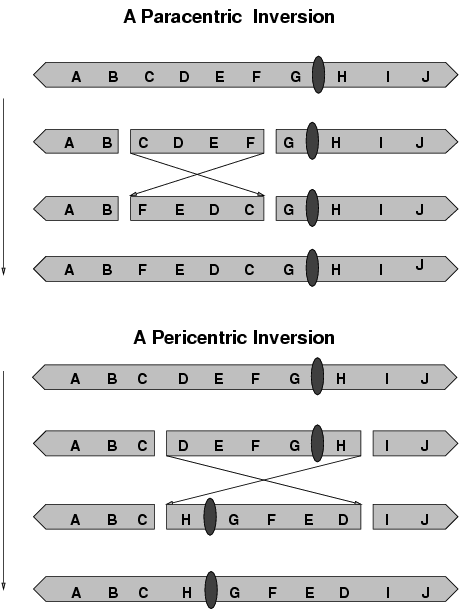
Chromosomes can be changed by many different rearrangements. If a chromosome breaks in two places, the piece can be reinserted in place with the opposite orientation (Inversion), the piece can get inserted at a different location (Transposition), if the breaks are on two different chromsome, the pieces can be swapped (Translocation).

A inversion heterozygote needs to form a loop with one chromosome so that the chromosome pairs can align in meiosis. Recognize that here heterozygote is in reference to chromosome and not genes. An inversion heterozygote can still be homozygote for all its genes.
Without recombination
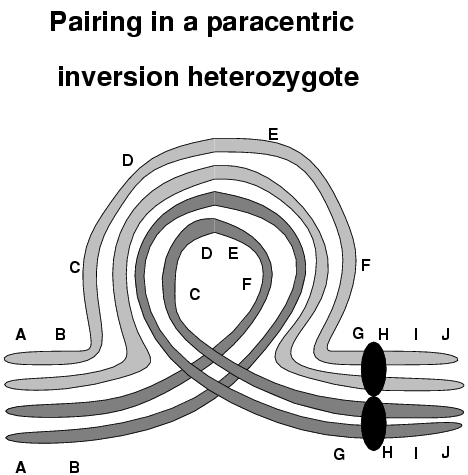
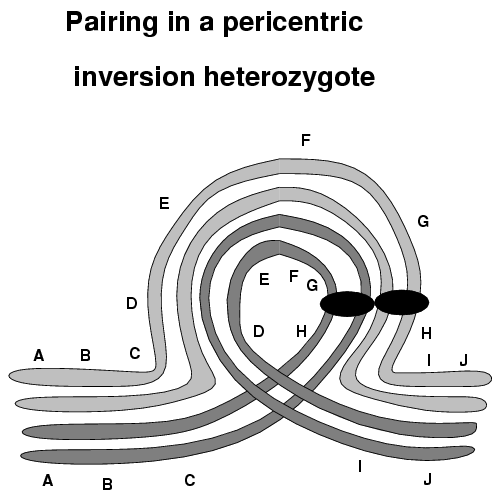
With recombination

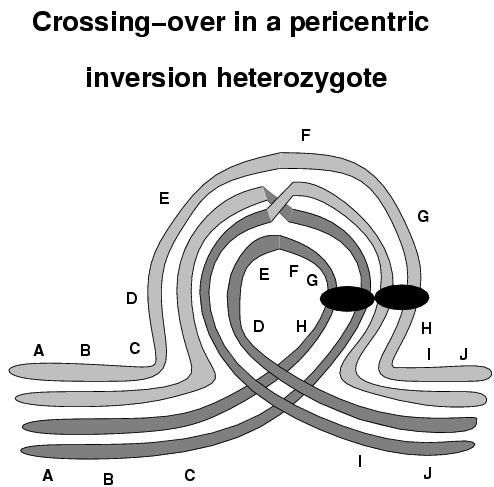
Remark that when there was recombination after segregation half of the strands that cross-over do not contain all genes (A-J) and some are duplicated (e.g paracentric inversion: ABCDEFG*HIJ, ABCDEFBA, ABFEDCG*HIJ, JIH*GFDCG*HIJ, where * means centromer). The chromosome with two centromers forms are chromosome bridge. With pericentric inversion, all segregating chromosomes will have centromers, but two of them lack some genes and have duplicates of others.
Inversion heterozygotes are not that fit (underdominance) compared to non-inverted individuals because they loose ahlf of their gametes.
In Drosophila there occur many inversion, because to the specific gametogenesis (where some of the segregates gets not incorporated into gametes) there is no huge penalty for the inversion heterozygote. Populations of Drosophila in Europe form a North-South cline of numbers of inversions. In the South many inversion occurm, whereas in the North a few to none. By accident Drosophila subobscura was introduced in South-America and North-America along the Pacific and here the form a similar cline. The inversions events must occur at some rather high frequency, because it is unlikely that all different inversion types where introduced.
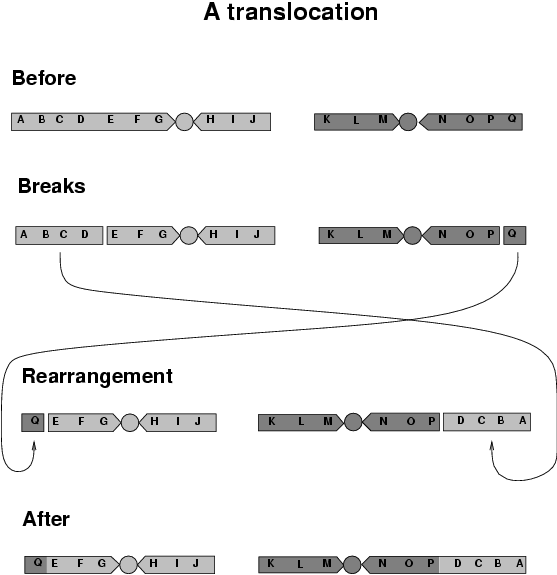
Translocation heterozygotes can still pair up their chromosomes, forming a cross. But half of their gametes will not contain all genes and some are duplicated.
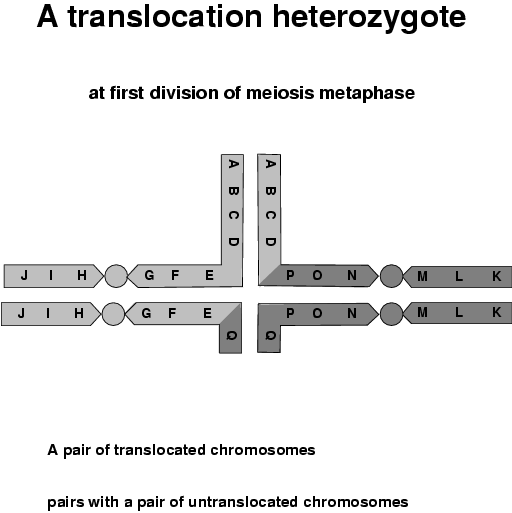
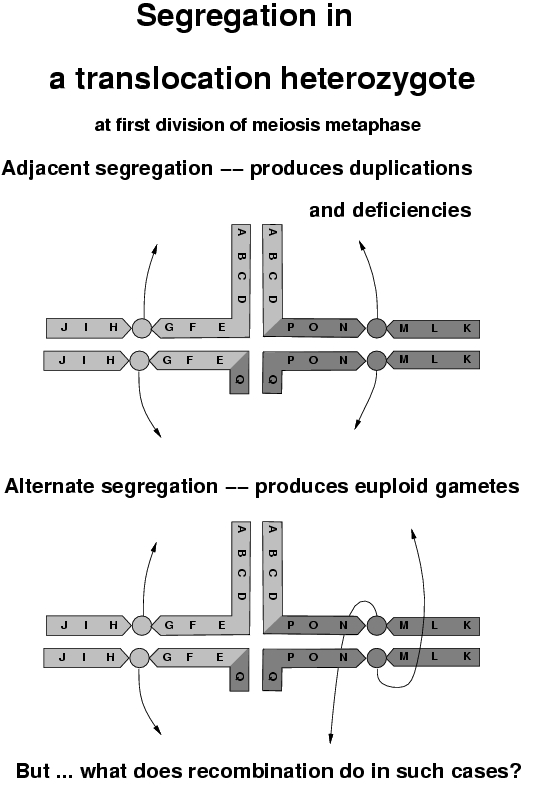
A famous example of this is the evening primrose (Oenanthera). Translocation heterozygotes segregate the chromatides from the tetrades in such a way that we get two kind of gametes (a non-translocated set of chromsomes and a translocated set of chromosomes).

